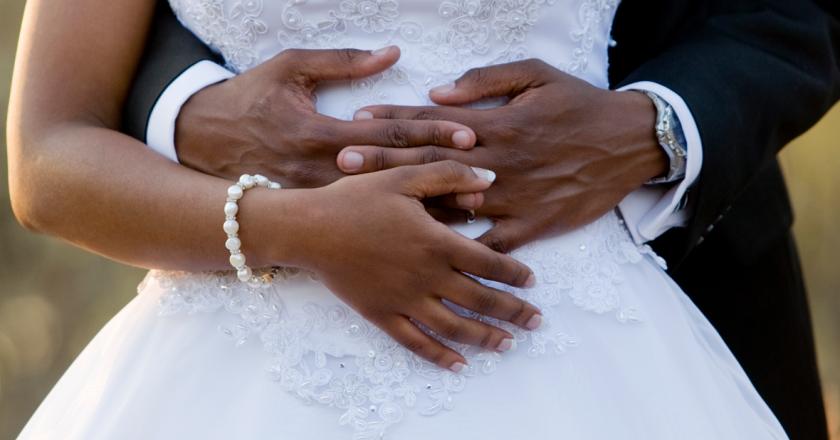“How many of you are here because you want to have a thriving, healthy marriage and build a family?” That is the question my wife and I ask participants when we lead marriage retreats for young adults. In response, every participant raises a hand.
Then we ask, “How many of you are here because you eventually want to get a divorce?” Nervous laughter and awkward shuffling may fill the room, but never, in 10 years of retreats, has a participant answered “Yes” to that question.
Marriage has long been a part of the American dream. People have an innate understanding that healthy marriages build healthy lives and families. But the declining marriage rate shows that the dream is fading. As I interact with young couples and singles across the nation, I notice that they embrace a mistaken belief that a healthy marriage is either unattainable or unnecessary. This mistruth plays into two problematic attitude trends:
- “Marriage can wait.” The median age of marriage rose from 23.2 years in 1970 to 29.5 in 2016 for men and from 20.8 years in 1970 to 27.4 in 2016 for women.1 Couples delay getting married for a variety of reasons: finances, education, or simply because they “want to get myself together” before making a commitment, believing that marriage is unattainable at least for now.
- “Marriage is unnecessary.” Couples are increasingly disinterested in getting married at all, consumed by single parenting, careers, or uncertainty about additional responsibilities. “All the things I expected marriage to confer—male companionship, close family ties, a house—I already had or were within reach,” says one single.2 In its place, 72 percent of Millennials think cohabitation is a good idea.3
Yet conspicuously absent from the current mistruth (“marriage doesn’t work anymore”) are examples of lasting, healthy marriages. Hardly ever do you hear stories of couples like Denzel and Pauletta Washington, married more than 30 years, held up as role models. And what of the startling statistics about Americans who start a family without a marriage? Data show that healthy marriages and families are one of the best solutions to a thriving society and eradicating poverty.
In relinquishing the dream of a thriving, vibrant marriage, couples miss at least two additional important realities:
- Healthy marriages and a strong family life are deterrents to poverty. Just over one in four poor families in the U.S. consist of a married couple and children. Three out of four families in poverty are led by singles or unmarried.4
- Healthy marriage is better for children. A married, two-parent family reduces the probability of child poverty by 82 percent.5
In other words, while the declining marriage rate reflects an almost tunnel-vision belief that “marriage isn’t working,” it is an incompletely informed belief.
The facts show that marriage is a potent incubator for stronger families, children, finances, and futures, pointing to an overwhelming opportunity for cultural leaders, policymakers, community influencers, and Americans generally to share the whole truth about marriage, including the truth about the challenges that often come with starting a family without a marriage.
Not long ago, Americans nationwide embraced the dream of building a healthy life, believing that the best strategy was to get married, have children, instill them with values, and release them to use their unique creativity to build to a better world. That dream has been clouded and is fading fast, but how might this generation shift their attitude if they were fully informed?
They might actually dream a new dream—and live it.
Rev. Derek McCoy is Executive Vice President of the Center for Urban Renewal and Education (CURE).
ENDNOTES:
1. U.S. Department of Commerce, U.S. Census Bureau, “Historical Marital Status Tables,” Table MS-2, “Estimated Median Age at First Marriage, by Sex: 1890 to the Present,” November 2016, https://www.census.gov/data/tables/time-series/demo/families/marital.html (accessed April 28, 2017).
2. Joy Jones, “‘Marriage Is for White People,’” The Washington Post, March 26, 2006,
http://www.washingtonpost.com/wp-dyn/content/article/2006/03/25/AR2006032500029.html (accessed April 28, 2017).
3. Barna Group, “Majority of Americans Now Believe in Cohabitation,” June 24, 2016,
https://www.barna.com/research/majority-of-americans-now-believe-in-cohabitation/ (accessed April 28, 2017).
4. Robert Rector, “Marriage: America’s Greatest Weapon Against Child Poverty,” Heritage Foundation Backgrounder No. 2465, September 16, 2010, p. 5, http://www.heritage.org/poverty-and-inequality/report/marriage-americas-greatest-weapon-against-child-poverty-0.
5. Ibid., p. 2.


